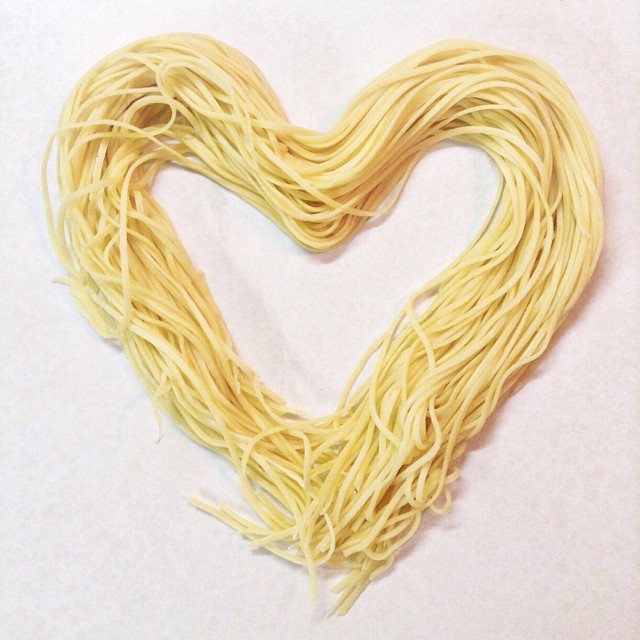
Have you ever eaten pasta made just an hour before you ate it?
I never had until a couple of years ago. And let me tell you, it’s a game changer. There are countless examples of foods that are so much tastier (not to mention healthier) when they are made at home from real, whole ingredients. Homemade pasta takes that rule and multiplies it by ten. The noodles are incredibly tender and delicious. It is by far my favorite comfort food.
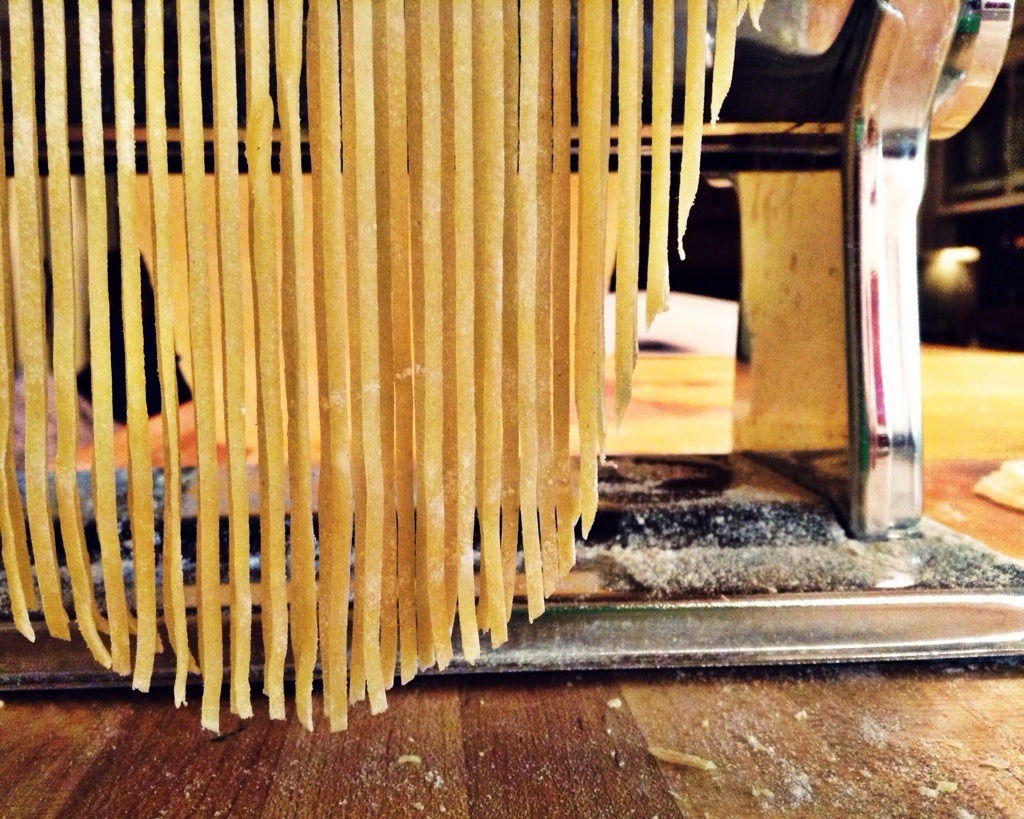
Just so you know, if you make fresh pasta for your family a few times, it is likely that you will all become spoiled once your eyes are opened to what homemade pasta can be. In our house, what started as a special occasion treat has become a weekly pasta night. And while I always keep a box or two of pasta on hand just in case, more and more often I find myself reaching for my pasta machine instead. Like so many things, the more you make it, the easier and faster the process becomes.
You do not have to have a pasta machine to make fresh pasta at home.
The first few times I made pasta I did not have a machine. I chose to make pasta for ravioli and lasagna because it seemed easier than cutting it into thin noodles. Another option is to make small pasta like bowtie pasta which you form with your fingers.
However, even though you can make pasta without a machine, if you find that you really enjoy the taste of homemade pasta and you think that you would like to make it somewhat regularly, a pasta machine is incredibly helpful. It makes the process significantly more efficient and simpler. The pasta machine is also great if your kids like to help you cook. My oldest son learned to feed the pasta through and crank the machine when he was just three years old.
Trial and Error Learning
I have made pasta countless times now. In the hope of preventing some of the problems I experienced as I learned how to make pasta, here are a few things I learned. If you struggle at first, don’t give up! Keep trying to figure out how to get it right. Once you figure out one thing, there is something else to figure out. Don’t be afraid of struggling or messing up a few times!
- The recipe for pasta is simple: eggs and flour. Start with learning this basic pasta dough. Figure out how it should feel, how to roll it out and cut it well. After you are comfortable making a basic dough, you can vary it up by adding pureed spinach or fresh herbs.
- Making the dough: There is an important middle-ground between adding too much flour (resulting in a dough that will not roll out well or will be tough when cooked) and not adding enough flour (also will not roll out well and will be frustrating to work with because of being too sticky). When making the dough, start with just enough flour. As you are mixing the eggs into the flour, pay attention to its consistency. If it is starting to come together and you still have a lot of flour left, set aside some of the excess flour to avoid drying out your pasta. You can always add in small amounts of flour as needed. The dough should be soft and well blended (no streaks of flour). Add enough flour so that it’s not sticky but remember that you will likely add more flour as it is rolled out.
- If you are working with a pasta machine, figuring out the right consistency of the dough is important. If the dough is sticking to the rollers or is tearing as it is fed through, then it is too sticky. Lightly dust the dough with flour before passing it through again. I usually lightly dust the dough with flour two to three separate times as I pass it through. If the dough is cracking and not feeding through the machine without clumping up, the dough is too dry. Work a teaspoon of water at a time into the dough to get it soft again.
- Drying out the dough: Lasagna noodles can rest right after being rolled out and left to dry out on the counter until ready to be used. Ravioli needs to be formed immediately so the edges will seal, then the individual raviolis can be dried on the counter until needed. Bowtie and other formed pastas need to be formed immediately so they are malleable and will dry in their formed shape. Angel hair or fettuccine noodles can be cut immediately if you are hand cutting them. If you are using a pasta machine to cut the noodles, the flat pasta needs to dry out for about 10-20 minutes before cutting. The pasta needs to be dried out a little but no so much that it is brittle and completely dry. If you try to cut it with the machine and the noodles come out sticking or clumping together, the pasta needs to dry a little before you try again. Just be careful because if you let it dry too long, you will not be able to feed it through the machine to cut it. (A ceiling fan in the kitchen makes a big difference in how fast your noodles dry!)
- When drying out the flat pasta or cut noodles, avoid piling them together if possible. The flat noodles need to dry without touching. Cut noodles will clump together if they are piled up too high while they are still soft.
- Fresh pasta only takes 1-5 minutes to cook. Bring a large stockpot of water to boil. Add a tablespoon of olive oil. The cooking time varies based on the type of pasta, how thick you rolled it out, and your preference for tenderness. My cooking times are typically: angel hair (1 minute), fettuccine (2-3 minutes), bowtie (3-4 minutes), ravioli (4-5 minutes).
- My mother-in-law, a true Italian, taught me to figure out how much pasta I would need based on the number of people eating– one egg per person. Adjust the amount of flour based on how many eggs you use.
- Once cut or formed, the pasta can be frozen. Frozen pasta can be added to boiling water without thawing. Simply add a minute or so to the cooking time.
- Flour choice: I like to grind my own flour occasionally and I like using white whole wheat flour for certain things. However, I only use unbleached all-purpose flour when I make pasta. I found that freshly ground flour and white whole wheat flour resulted in a dough that was hard to work with and noodles that were tougher than we liked. We eat whole wheat when we can, but fresh pasta is meant to be tender and delicious (IMHO). (UPDATE: I have figured out how to make a nice, soft pasta with fresh ground flour so that is what I use most often now).
How to Make Fresh Pasta at Home
- The ratio to learn is 3 eggs to 2 cups of flour. Adjust the flour amount accordingly based on how many eggs you need (generally one egg per person).
- On a clean countertop*, dump 2 cups of flour into a mound. Make a well in the center of the mound, pushing the sides out to make room for the eggs. Crack three eggs into the well and mix them with a fork, keeping the eggs in the center of the flour. Slowly add flour into the eggs, incorporating it together with the fork. Continue to add flour and mix until the eggs are wet but not runny. Use a bench scraper or your hands to knead the dough until it comes together and is soft and blended. Add additional flour as needed, taking care not to add too much. Rinse your hands, finish kneading the dough. Divide the dough into four pieces and roll each into a ball. Cover with plastic wrap and let rest for thirty minutes. (The rest time is not a hard and fast rule, but I usually use this time to clean a little or start my sauce).
*I like the process of mixing the dough on the countertop. Seems old-fashioned and therapeutic for me. But mixing the dough in a bowl is certainly another (more practical) option.
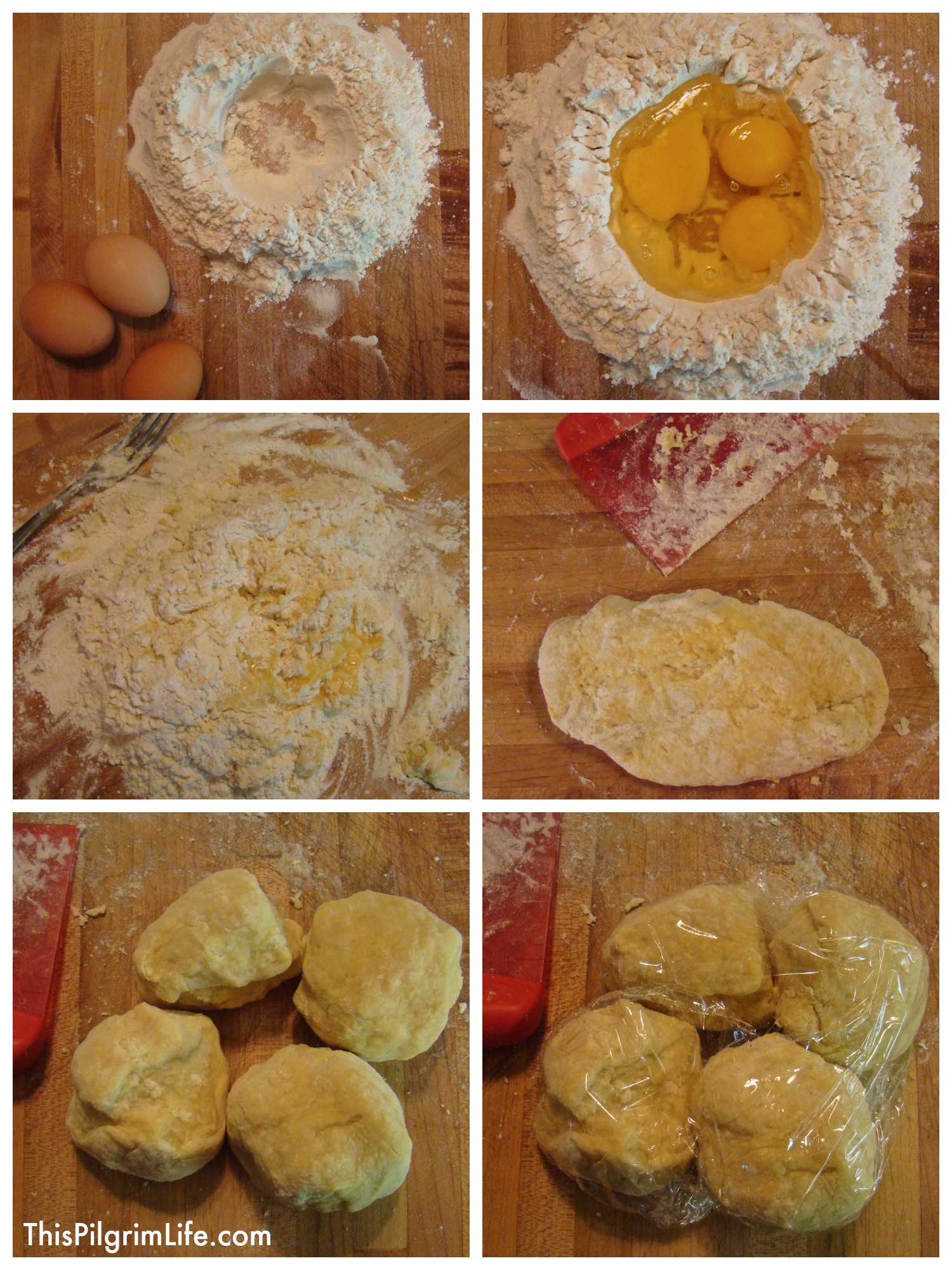
- After the dough has rested, roll each piece out one at a time. If rolling the dough out by hand, dust the dough and the countertop with flour. Use only enough to keep it from sticking. If rolling the dough out by machine, press the ball flat, dust with flour, and roll through each setting, starting at the thickest and moving to the thinner. Lightly dust with flour as needed. I usually roll my pasta out to the seventh setting for everything except angel hair, which I roll out to the eighth setting.
- Depending on which pasta you are making (see tip above), form, cut, or lay out the noodles to dry.
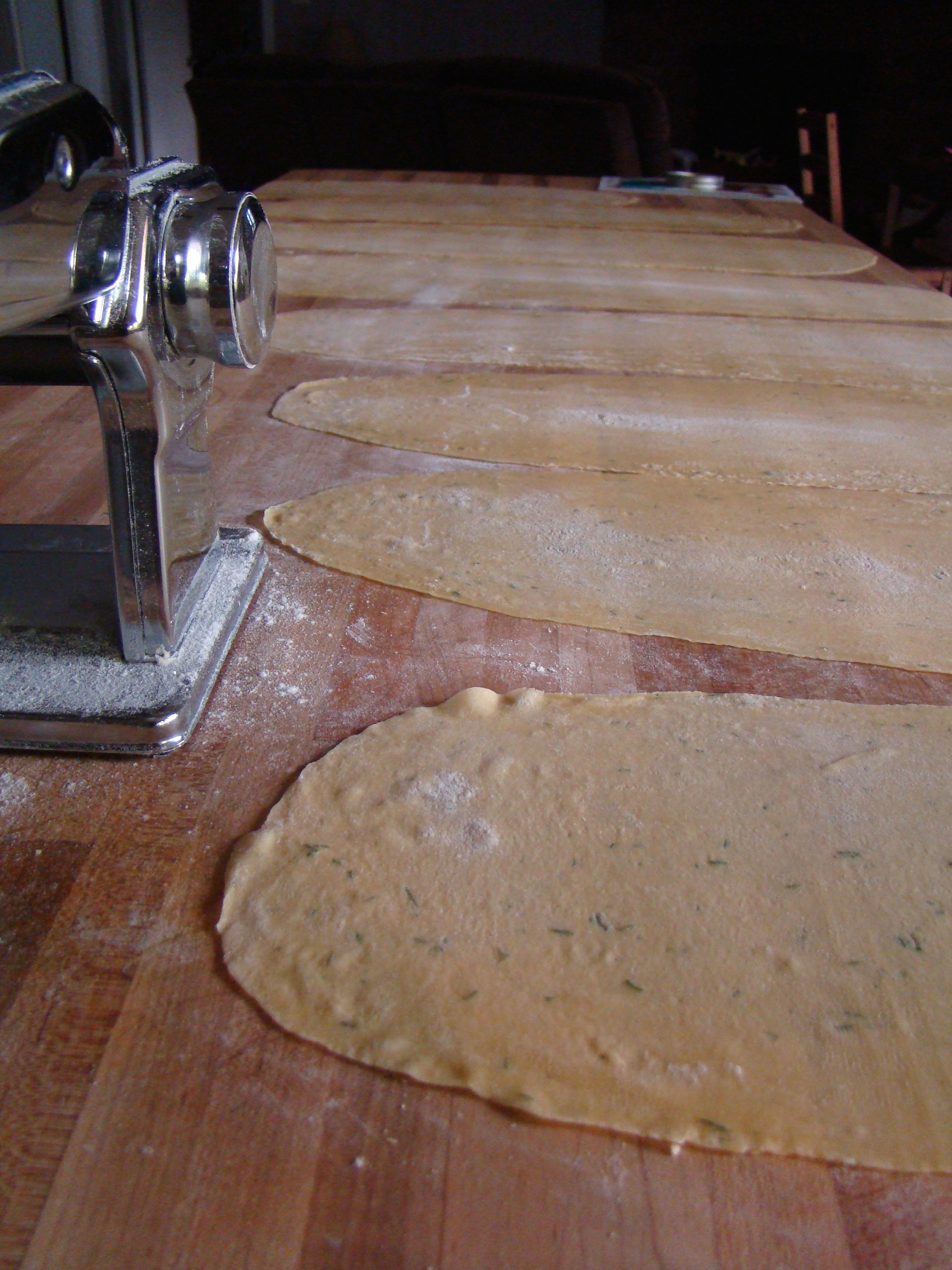
- Boil pasta in a large stockpot (see tip above for cooking time).
- Toss with a sauce and toppings.
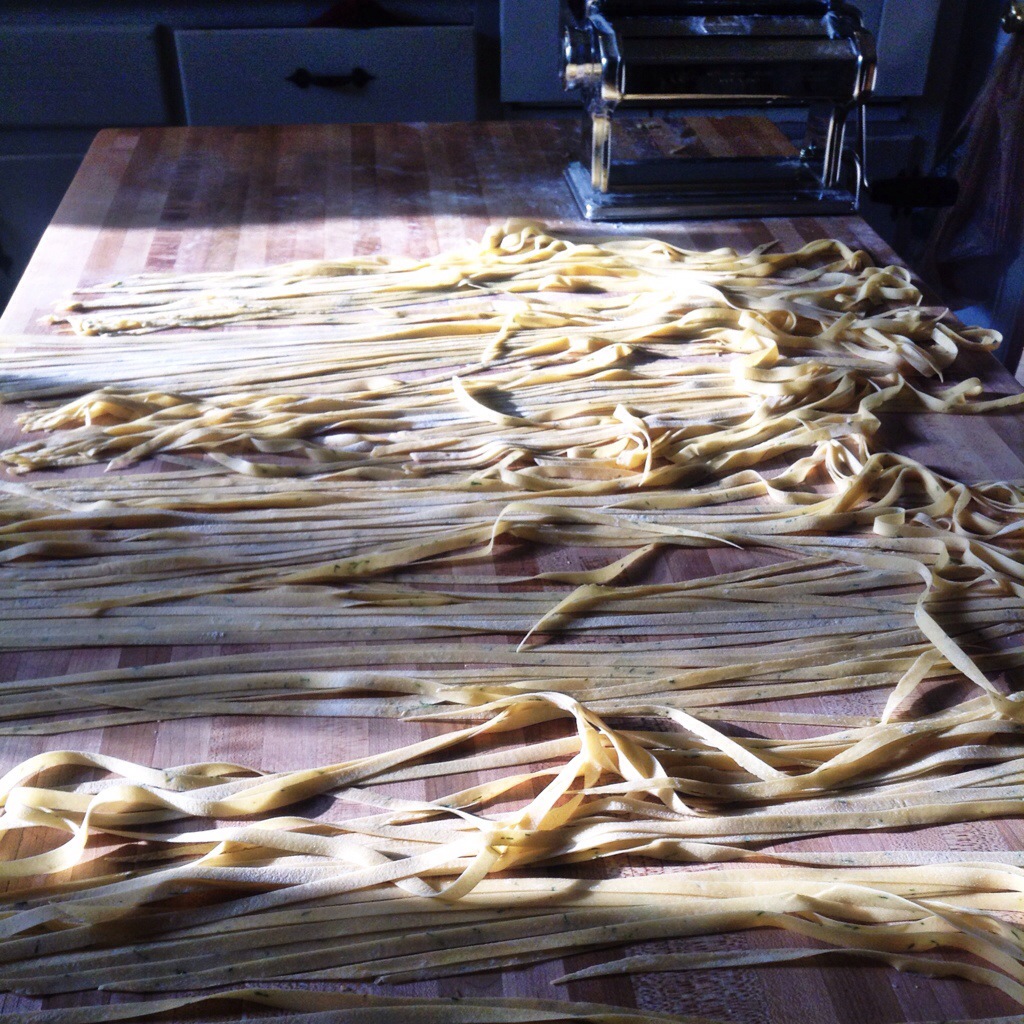
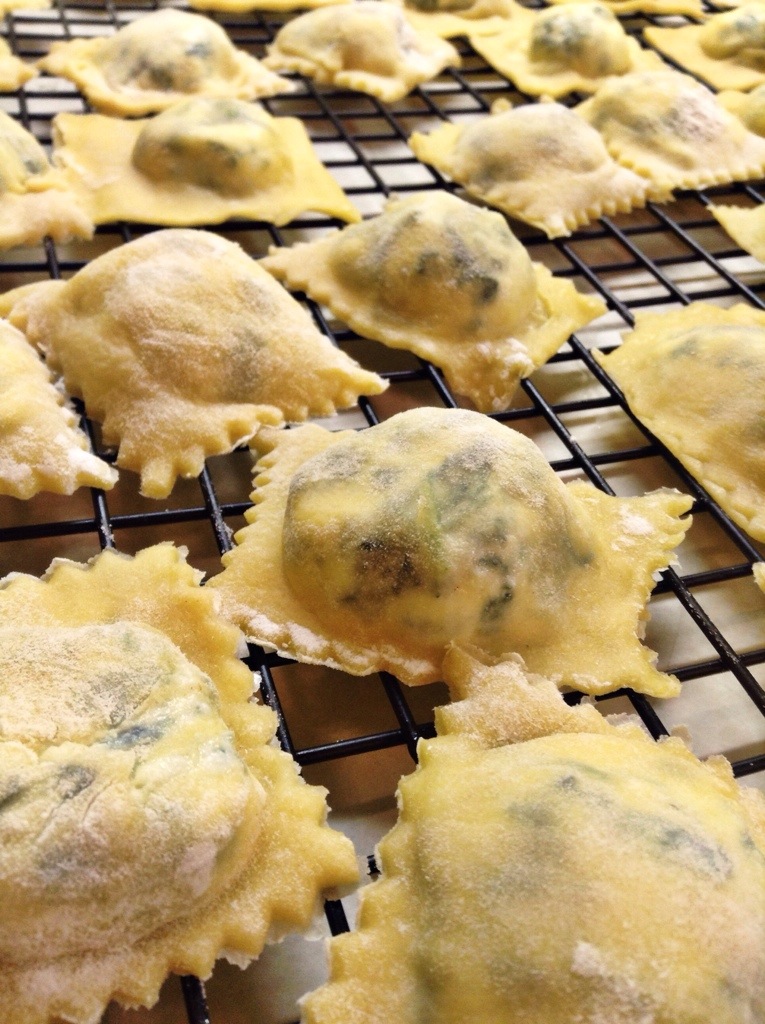
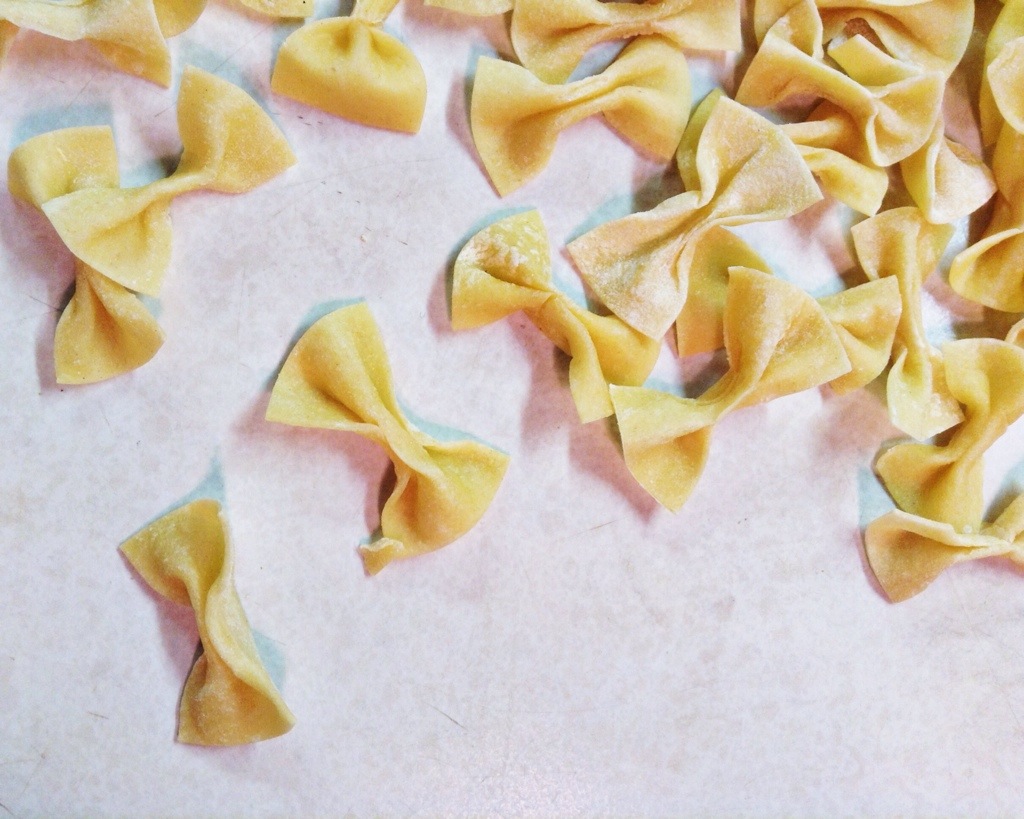
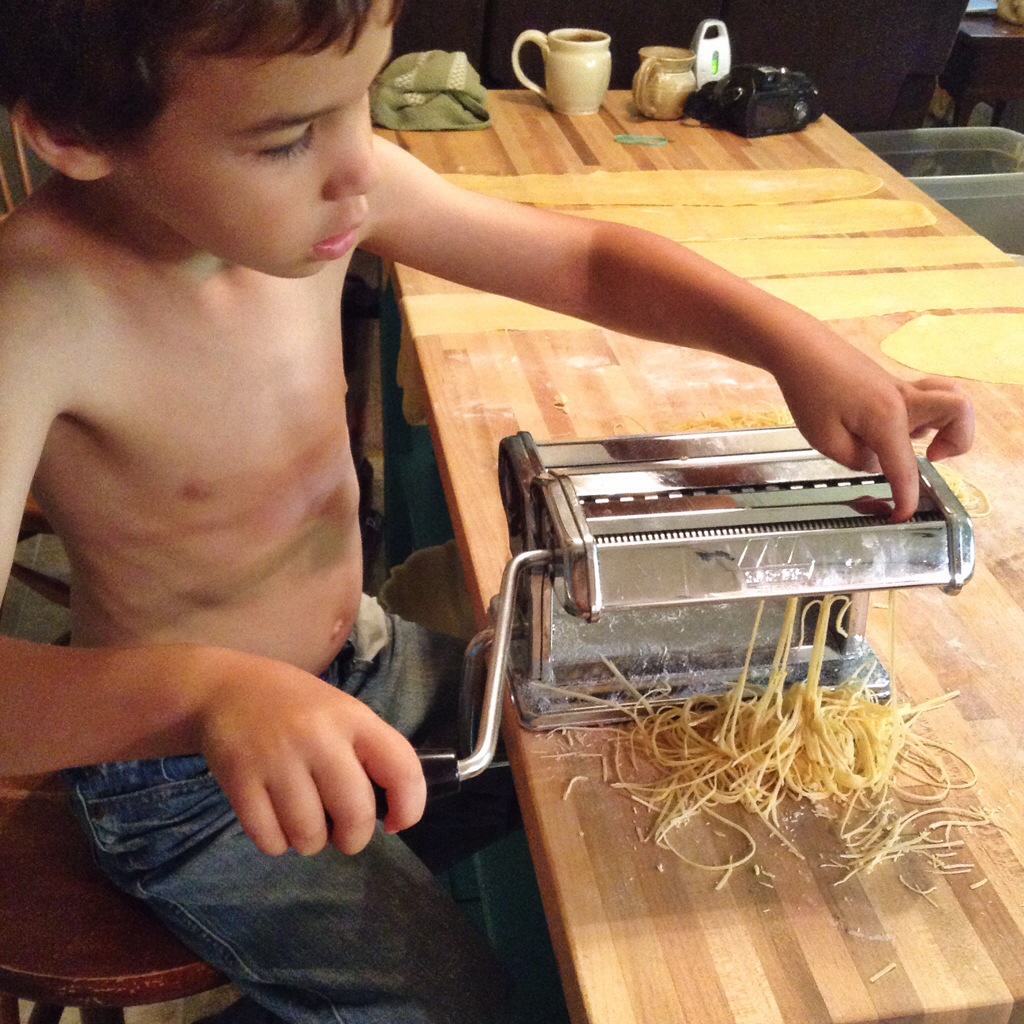
How thick do you cut for exemple spaghetti or tagliatelle with the pasta machine? I made 3-4 times and all went well until I boiled them for 4-5 min and it became very sticky and fudgy…What may be the problem?
You were the first person that came to mind when I wanted to try this w the kids! Thanks and keep up the good work mama!?
Made raviolis from your video. I bought off Amazon the tray you showed. There is a learning curve to this. But they tasted great. Will try again.
This is an authentic fresh pasta recipe! It has the perfect ratio of flour to eggs, creating a lovely tender dough. Letting the dough rest as suggested is key to getting the fabulous tender dough rolled out with a rolling pin. It has worked well cooking right away (as directed) or freezing uncooked pasta noodles in little nests to cook later. Homemade pasta is the best!
can i tell you how much i loved this? I tried this out and it turned out to be super delicious. Thanks for sharing.
Awesome! That’s the wonder of having a pasta maker at home. You don’t only satisfy your own craving but you get to make different kinds too! Love homemade pasta!
Very clear instructions, and beautiful pictures! It’s nice seeing someone else using a manual pasta roller every now and then, as most people that I know either use a KitchenAid or a motorized version of the Marcato Atlas 150. What pasta roller are you using, if you don’t mind me asking of course?
Especially the ravioli and the farfalle looked delicious, I am sure it tasted delicious as well!
Kind regards,
Julia
I love pasta, and the thought of fresh homemade pasta does sound comforting. I just know I’m lazy about putting in the work to do it. I wish you can come over and do it for me. 🙂
How do your kids feel about dough and rolling pins? If they’re fans of playdoh, they might enjoy this 😉